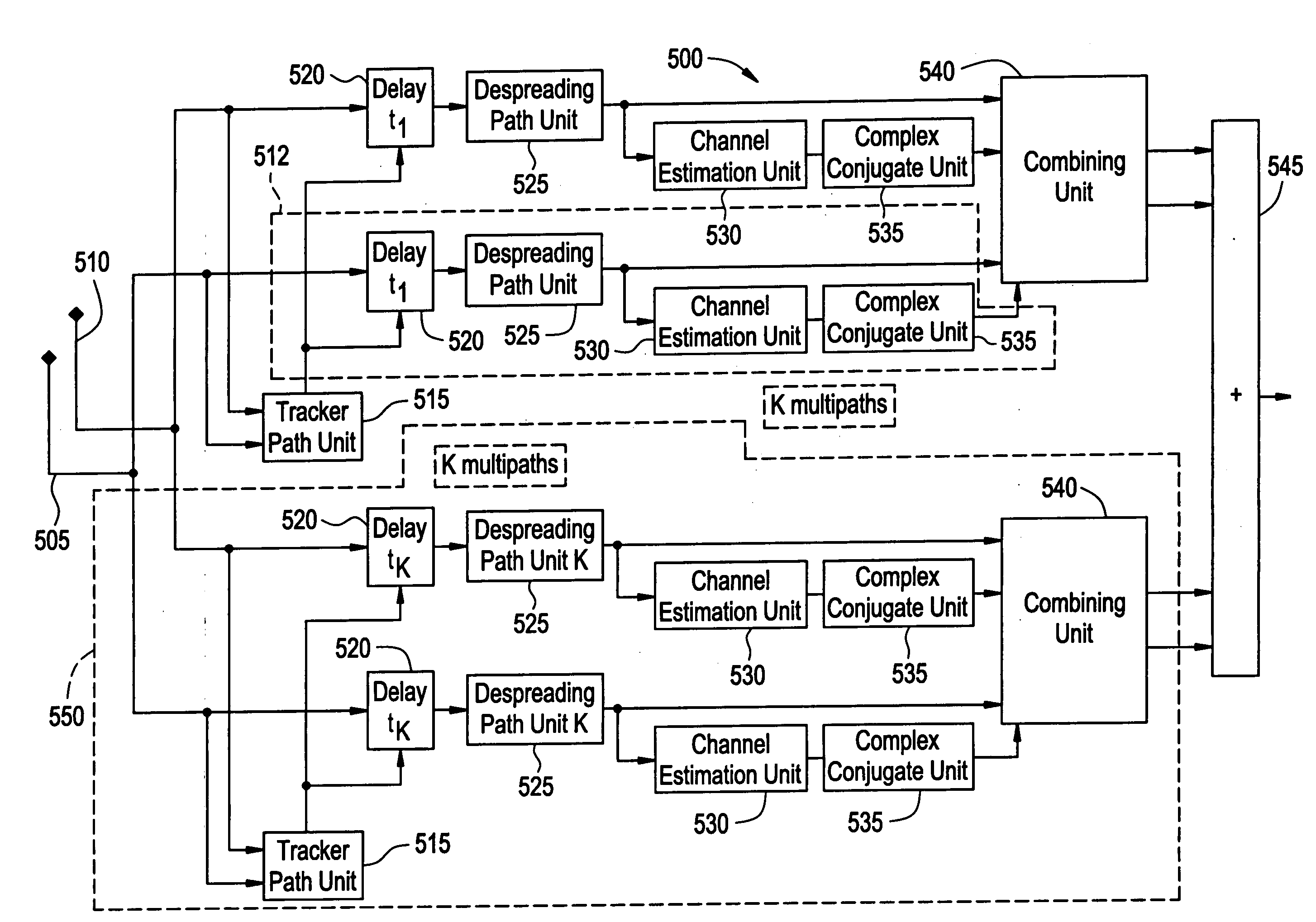Method of processing multi-path signals
a multi-path signal and signal processing technology, applied in the field of multi-path signal processing, can solve the problems of performance degradation, rake fingers losing synchronization with multi-path signals on propagation paths,
- Summary
- Abstract
- Description
- Claims
- Application Information
AI Technical Summary
Problems solved by technology
Method used
Image
Examples
example 1
RAKE RECEIVER EXAMPLE 1
[0016]FIG. 1 illustrates a Rake equalizer structure 500 according to an exemplary embodiment of the present invention. The Rake equalizer structure 500 includes first antenna 505 and second antenna 510. The first and second antennas 505 and 510 are spaced apart from each other by half a wavelength (i.e., λ / 2). It is understood, however, that any separation between first and second antennas 505 / 510 may be used (e.g., greater than λ, less than λ / 2, etc . . . ).
[0017] The rake equalizer structure 500 may include a plurality of tracker path units 515 and delay units 520. In one embodiment, each of the delay units 520 is associated with a given Rake finger. The received antenna signals from each of the first and second antennas 505 / 510 are sent to corresponding tracker path units 515 and delay units 520.
[0018] The Rake equalizer structure 500 may include a plurality of clusters 550, each of the plurality of clusters 550 including a plurality of fingers 512 associ...
example 2
RAKE RECEIVER EXAMPLE 2
[0023]FIG. 2 illustrates a Rake equalizer structure 600 according to another exemplary embodiment of the present invention. Rake equalizer structure 600 includes a single antenna 605. The Rake equalizer structure includes a plurality of clusters 610, a first plurality of fingers 611 and a second plurality of fingers 612 (e.g., fingers which are not included within a cluster). Each of the plurality of clusters 610 includes a plurality of fingers 612. In one embodiment, a multi-path signal received by a cluster 610 is processed by all of the fingers 611 within the cluster 610. In another embodiment, a multi-path signal sent to a finger 612 not within a cluster is processed only by the finger 612. Each received multi-path signal is sent to either a finger 612 or a cluster 610.
[0024] When a multi-path signal is received at a finger 612 which is not within a cluster 610, the finger 612 may process signals in a similar manner as finger 512 as above-described with r...
PUM
 Login to View More
Login to View More Abstract
Description
Claims
Application Information
 Login to View More
Login to View More - R&D
- Intellectual Property
- Life Sciences
- Materials
- Tech Scout
- Unparalleled Data Quality
- Higher Quality Content
- 60% Fewer Hallucinations
Browse by: Latest US Patents, China's latest patents, Technical Efficacy Thesaurus, Application Domain, Technology Topic, Popular Technical Reports.
© 2025 PatSnap. All rights reserved.Legal|Privacy policy|Modern Slavery Act Transparency Statement|Sitemap|About US| Contact US: help@patsnap.com



